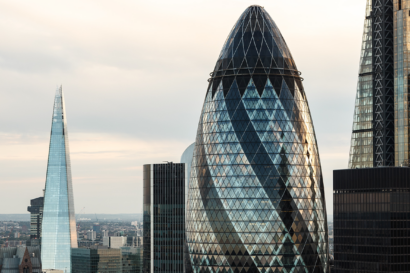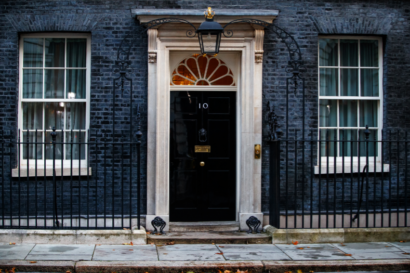AG INSIGHT | 01/10/2018
The colour of money: Engaging financial markets in green infrastructure

Alex White, Policy Manager at the Aldersgate Group, considers how the EU can meet its 2030 Climate & Energy targets and increase investment in green infrastructure.
The EU is facing a significant investment gap for the green infrastructure it needs to meet its 2030 Climate & Energy targets, much of which must filled by private sector investment. To accelerate and increase this investment, the EU must send the right macroeconomic policy signals, use public funds to reduce risk, address structural barriers to green infrastructure investment, and take action to improve the investment ecosystem.
There is no escaping the fact that hitting the EU’s 2030 environmental targets is going to require a lot of investment. The current 2030 Climate & Energy Package have an annual gap of about €180bn for low carbon transport and buildings as well as energy and resource management. With the public purse chronically overextended, the vast majority of this will have to come from additional private sector finance. However, that should be manageable – the EU’s capital markets stood at around €8.4tn in 2013, so the investment gap is less than 2.5% of the market.
This is both an opportunity and an imperative. There are real wins for private investors moving into the growing low carbon economy: A stock-market index focussed on environmental businesses established by index-provider FTSE Russell performed better than the non-green alternative over 5 years. On the flip side, there are substantial risks in not taking environmental issues into account when investing: for example, if fossil fuel assets are stranded because of reduced demand and/or regulatory restrictions (e.g. banning coal) the losses could stack up to $1-4tn globally (for scale, the 2008 crisis cost the world $0.25tn).
So, investors should be investing in Europe’s green infrastructure – but they aren’t doing it at the scale and speed required. In an upcoming paper for the Think 2030 conference, the Aldersgate Group identifies 4 key areas of action for the EU to significantly increase the volume of private finance flowing towards green infrastructure.
1. Greening EU spending
The EU cannot justify using public funding to support environmentally damaging projects which undermine its Paris Agreement and SDG commitments. In practice, this means that all spending must become green to send the right macroeconomic policy signals to private investors.
The EU’s Budget (MFF) must go beyond the 25% ringfenced budget for climate action, to ensure that 100% of budget spending is aligned with climate and environmental goals. This includes rapid phase out of all fossil fuel subsidies, with a clear roadmap for doing so to be published as a matter of priority.
Other European institutions, like the EIB and ECB must also investigate how (and indeed whether) their activities are supporting the low carbon transition and the EU’s stated policy aims. For example, the ECB should consider purchasing green bonds under its Quantitative Easing purchases.
2. Reducing investment risk
Infrastructure, especially green infrastructure, still carries a relatively high level of risk and is therefore potentially less appealing to the private sector. An earlier blog in this series by Nick Molho pointed to the need to build a clear and stable project pipeline as a starting point for investment, which would reduce risk. The EU can help with this process by requiring Member States to develop their mandatory National Energy and Climate Plans (which would establish project pipelines) into National Capital Raising Plans, which would draw out where public funding will be spent and what investment opportunities there are to improve investor confidence.
EU institutions can further reduce risk through targeted public spending for new and complex investment areas, which then pushes down the cost and pulls in more private investors. It can do this through a variety of means. For example, by providing guarantees to take on financial loss if a project fails. This way, government can encourage critical infrastructure to be built without the need to provide upfront funding.
3. Tackling structural barriers to green infrastructure investment
There are vital structural barriers to investment in green infrastructure which the EU can address. Firstly, financial markets are currently inherently short-term in structure, which is at odds with the risks that come from climate change, some of which will be only be evident over the course of decades.
A key way to increase the time horizons of the investment world is if fiduciaries (i.e. those responsible for managing other people’s money such as pension fund trustees) are required to take financially material environmental, social and governance issues into account when making investment decisions. The UK government has recently introduced this through its revision of fiduciary duties for pension fund trustees.
Secondly, within Europe it is currently often less attractive to invest in infrastructure than non-real assets. EU capital weighting requirements compel investors to hold money in reserve against investments as collateral against bankruptcy, and more money must be held for infrastructure which is harder to trade.
We recommend that the next Commission focus on establishing whether there is a case for a ‘green supporting factor’ which lowers the amount of capital held in reserve for green infrastructure if it is less risky (not being subject to a variety of climate-related risks); or introducing a ‘brown penalty factor’, which increases the amount of capital held in reserve for fossil fuel investments and the like, given they are likely to increase financial instability. This must not introduce additional risk into the system however, so a comprehensive evidence-gathering exercise will be vital.
4. Improving the ecosystem
The EU can take action to improve the wider ecosystem for green finance. For example, better definitions of what is meant by ‘green’ and non-green will be vital to help reduce reputational risks (and therefore costs for investors) in this still-nascent market – it will form the basis of developing wider green financial products and help pull green into the mainstream. The Commission’s Technical Expert Group on a sustainability taxonomy is currently establishing a European definition, but time is of the essence to establish a solid framework for the next Commission to build on.
Another area to tackle is the availability of high-quality information available to markets. Information drives markets, and this can be achieved through the Europe-wide adoption of the Taskforce on Climate-related Financial Disclosures, which will help investors clearly identify the long-term risks to their portfolios and therefore help move investments away from non-green.
The EU has already set out an impressive vision and ambition through its Sustainable Finance Action Plan. Prompt delivery in the final months of this Commission and throughout the next is essential, and will be rewarded by unlocking affordable private finance to fund meeting the EU’s climate, energy and social targets, whilst supporting growth of a competitive low carbon economy and turning the EU into an international hub for green finance. With the world’s attention turning towards green finance, the EU is well placed to write the rules for this new global movement, as long as it takes action now.
This piece is part of the Aldersgate Group’s blog series ahead of Think 2030, IEEP’s new sustainability platform informing a science-based agenda for European environmental policy beyond 2020. The conference convenes a diverse range of stakeholders to discuss and propose solutions to Europe’s most pressing sustainability issues and will review findings from a range of expert policy papers, one of which was written by the Aldersgate Group.



